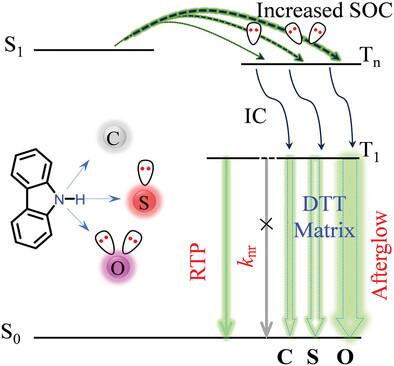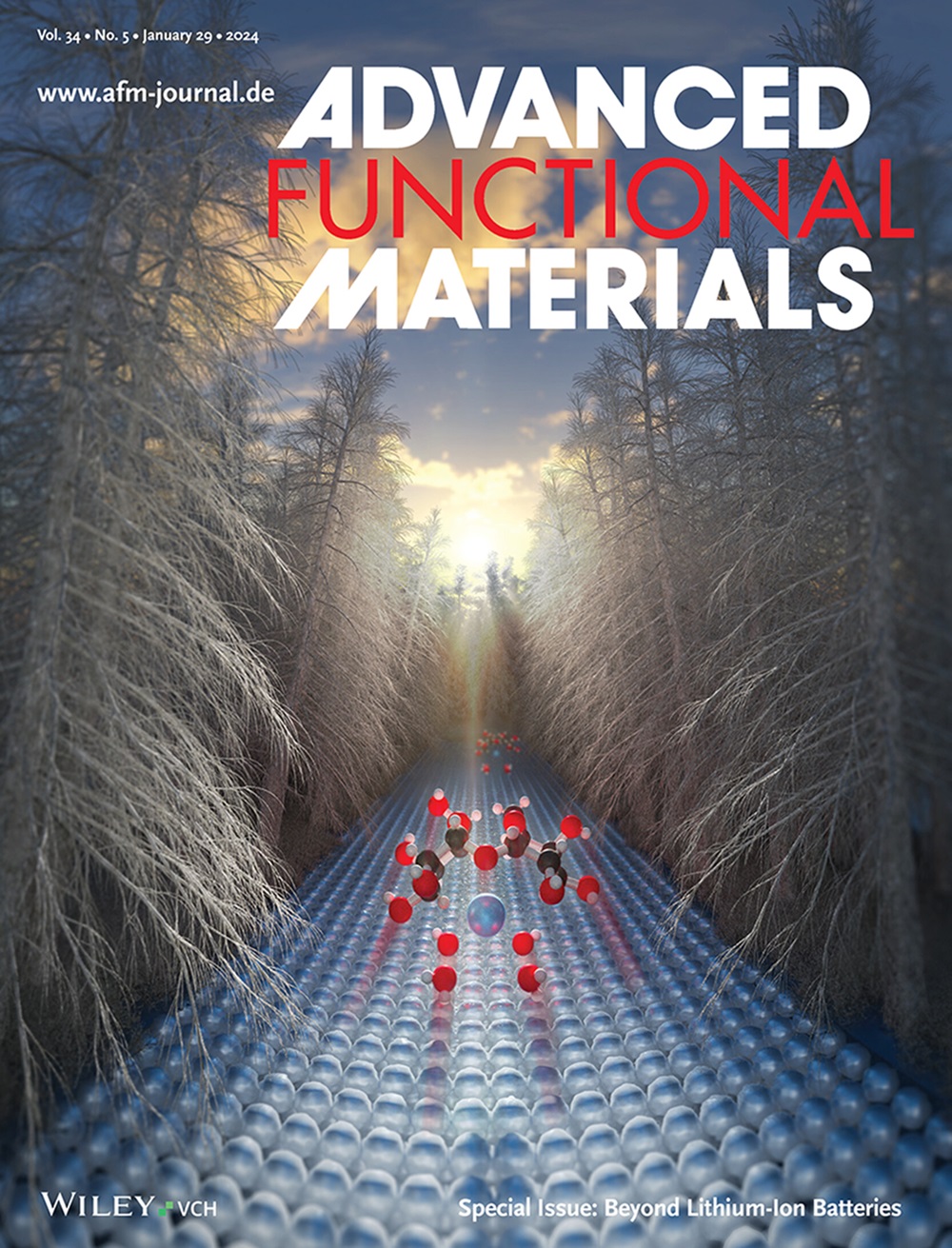Host-Guest Systems Enable Efficient Organic Afterglow via a Facile Spraying Method
IF 18.5
1区 材料科学
Q1 CHEMISTRY, MULTIDISCIPLINARY
引用次数: 0
Abstract
Unlocking the afterglow properties of the fluorescence molecules at room temperature is an urgent challenge. Herein, inks prepared with dimethyl terephthalate (DTT) and carbazole (Cz) analogs with heteroatom (C, S, and O) substituents on the N as host and guest molecules can be directly sprayed onto different substrates to unlock the excitation-wavelength dependent (Ex-De) afterglow characteristics of the guest compound. Additionally, with the increase in the number of lone pair electrons, spin-orbit coupling (SOC) increases, resulting in a longer afterglow duration lasting up to 4.5 s with Φp>27%. Theory calculations and experiments indicate that the afterglow originated from the interactions between the host and guest molecules restricting the non-radiative transition of the triplet excitons. Different Ex (with watershed at 310 nm) lead to the variation in the conformation of the S0DTT and S1DTT, which in turn affects the strength of host-guest interactions and contributes to the Ex-De characteristics. Benefiting from facile preparation, substrate-independent applicability, and Ex-De characteristics, the afterglow samples are demonstrated for applications in multilevel information security fields. This work proposes a general strategy for unlocking the afterglow emission of traditional molecules, which is valuable for the discovery of high-performance afterglow materials in the future.

寄主-寄生物系统通过简便的喷涂方法实现高效有机余辉
了解荧光分子在室温下的余辉特性是一项紧迫的挑战。在此,以对苯二甲酸二甲酯(DTT)和在 N 上带有杂原子(C、S 和 O)取代基的咔唑(Cz)类似物为宿主分子和客体分子制备的油墨可直接喷涂到不同的基底上,以释放客体化合物的激发波长依赖性(Ex-De)余辉特性。此外,随着孤对电子数量的增加,自旋轨道耦合(SOC)也会增加,从而使余辉持续时间更长,可达 4.5 秒,Φp>27%。理论计算和实验表明,余辉源于主分子和客分子之间的相互作用限制了三重激子的非辐射转变。不同的 Ex(以 310 纳米为分水岭)会导致 S0DTT 和 S1DTT 的构象发生变化,进而影响主客体相互作用的强度,并促成 Ex-De 特性。余辉样品具有制备简便、不依赖于基底的适用性和 Ex-De 特性等优点,可应用于多层次信息安全领域。这项工作提出了释放传统分子余辉发射的一般策略,对未来发现高性能余辉材料具有重要价值。
本文章由计算机程序翻译,如有差异,请以英文原文为准。
求助全文
约1分钟内获得全文
求助全文
来源期刊

Advanced Functional Materials
工程技术-材料科学:综合
CiteScore
29.50
自引率
4.20%
发文量
2086
审稿时长
2.1 months
期刊介绍:
Firmly established as a top-tier materials science journal, Advanced Functional Materials reports breakthrough research in all aspects of materials science, including nanotechnology, chemistry, physics, and biology every week.
Advanced Functional Materials is known for its rapid and fair peer review, quality content, and high impact, making it the first choice of the international materials science community.
 求助内容:
求助内容: 应助结果提醒方式:
应助结果提醒方式:


